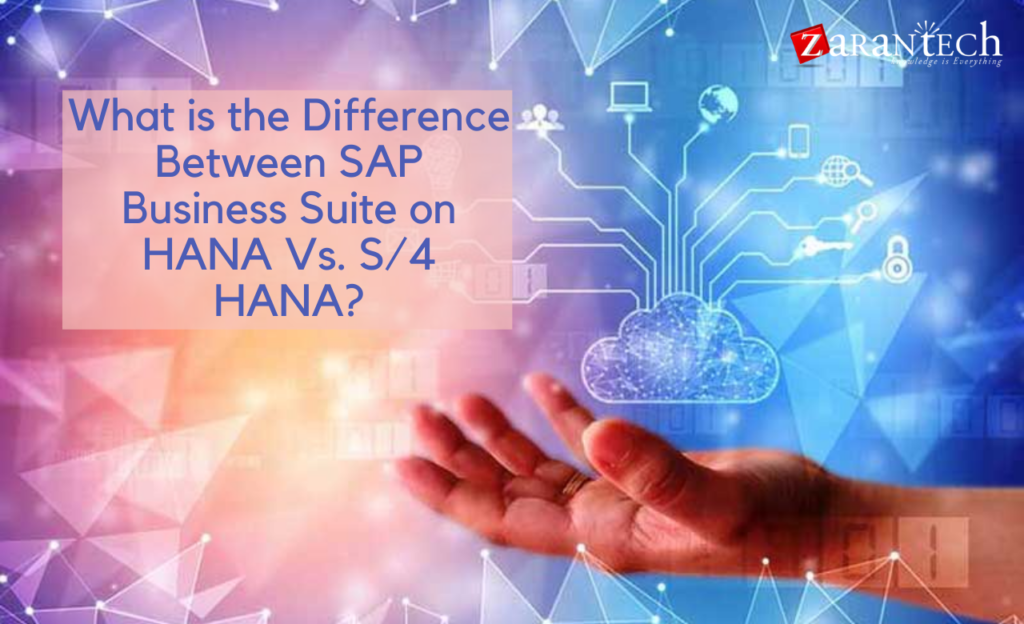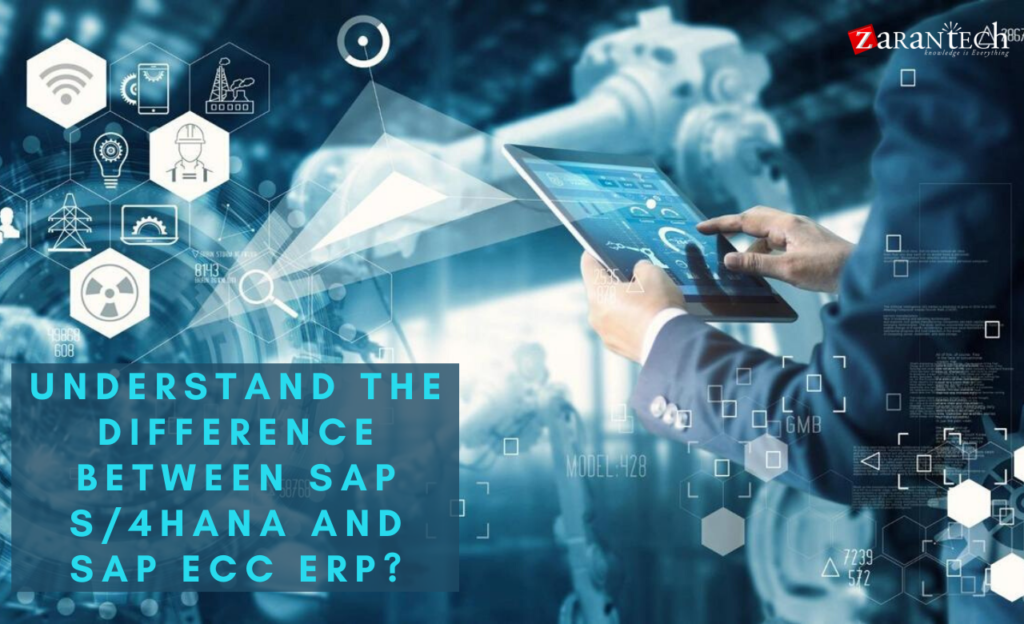Difference Between SAP Central Finance and SAP S/4HANA
Category: SAP S/4HANA Posted:May 12, 2020 By: Robert
Because of the comparative wording and usefulness, one of the top inquiries nowadays individuals search is SAP Central Finance versus S/4HANA Finance or what is the key distinction between Central Finance and Simple Finance. To answer it in basic language, here I put an explanation.
SAP Central Finance is one of the deployment options to do S/4 HANA migration as well as conversion. Whereas SAP Simple Finance or S/4 HANA Finance is the new business application on the HANA Platform.
Key Differentiators: SAP Central Finance vs S/4HANA Finance
SAP Simple Finance is the next-generation financial solution of SAP. The SAP Simple Finance design looks at the essential features that have actually driven the growth of CentralFinance. Thus, it prepares its key differentiators. These are:
- First of all, it inherently leverages the opportunities of in-memory technology.
- Secondly, it eliminates the redundancy to simplify the system
- Finally, it helps with non-disruptive development.
SAP S/4HANA Finance
The SAP S/4HANA Finance application offers Planning, Consolidation, Accounting, and Compliance on Cloud technology. Even more, it offers SAP Accounting, Cash Management, and all financial aspects of the organization. These are Financial Accounting, Management Accounting, Bank Management Accounting, Profitability Analysis & Bank ledger Accounting, etc.
Key Tools in SAP Simple Finance
In-Memory Modern technology
At the core of SAP HANA, there is an enormously parallel Database Management System (DBMS). This DBMS runs completely in the main memory.
While the traditional DBMSs were developed for maximizing performance on hardware with constricted main memory. In contrast, the SAP HANA database is created from the ground up. It functions around the idea that memory is available in abundance to keep all business data.
Further, the input/ output (I/O) access to the hard drive is not a constraint in the S/4 HANA Database.
Similarly, while the traditional database systems put one of the most efforts into optimizing hard drive I/O. The SAP HANA focuses on optimizing memory access between the CPU cache and the main memory.
Features of In-memory database in SAP S/4HANA (Central Finance vs S/4 HANA).
1. Keep Data in Memory
Although you still need the Nonvolatile Storage Space (Disk-based memory) to make sure that write operations are durable. Since the read operations can anticipate that all appropriate data resides permanently in main memory. Therefore you can implement them without disk I/O.
2. Maximize the In-Memory Information accessibility
Since all the data is easily available in the main memory. Subsequently, the data movement between the CPU Cache and the Main Memory becomes the new performance bottleneck. SAP HANA fixes this by using the columnar store as well as effective data compression strategies. For this reason, it successfully reduces the total size of data in memory. Not only this, but it also accomplishes high hit ratios in the different caching layers of the CPU.
3. Support Large Parallel Data Handling
Modern computer systems have a continuously raising variety of processing cores. In order to natively take advantage of greatly parallel multicore processors, SAP HANA handles the SQL processing guidelines into an optimized model. Additionally, this model allows parallel execution and scales unbelievably well with the number of cores. The optimization includes segmenting the data in sections for which the calculations can be executed in parallel.
Want to Boost Your Skills in SAP HANA Central Finance? Click Here
Columnar Data Structure of Table
Conceptually, Relational Databases represent data in two-dimensional frameworks called tables. A table is a set of data elements organized in vertical columns or features and horizontal rows or records. The features are identified with their name.
There are basically 2 choices. Row-Based layout stores a table as a series of rows. In this, the data aspects develop a row. Further, this row is stored in a contiguous memory location. Likewise, a column-oriented layout stores a table as a series of columns. In each column, the data elements of individual columns are stored with each other.
Example
In the row-based layout, we store all features of a tuple (Ordered set of values) consecutively and sequentially in memory. As a matter of fact, in a columnar layout, we store the values of individual columns together in the resulting format in memory.
Removal of Data Redundancy
Data Redundancy is a data organization issue that permits the unneeded duplication of data within the database. A change or adjustment, to redundant data, needs that you make changes to numerous fields of the database. As a result, the new architecture of the HANA Database permits merged OLTP (Online Transactional Processing) & OLAP (Online Analytical Processing) data processing within a single in-memory column-based data. Further, we save this data with ACID compliance while eliminating data redundancy.
Real-time Analytics
The system stores the transactional as well as analytical data together. Thus, the SAP HANA application provides an on-the-fly evaluation for all combinations of data. Consequently, the consumer can make immediate decisions utilizing real-time operational analytics whether the data comes from SAP applications or any kind of third-party applications.
Big Data
HANA can use the potential of Big Data with its capability to deal with large volumes and a variety of structured as well as unstructured data in real-time. Hence, you can construct a data warehouse and integrate it with Hadoop. Additionally, you can conveniently migrate your existing SAP Netweaver Business Warehouse (BW) to SAP HANA.
Single Source of Truth
The Universal Journal is the single source of truth as well as the holistic basis for next-generation accounting in SAP Simple Finance. Even more, it changes the game with respect to reconciliation-free transparency, seamless navigation, as well as superior insight into financial data.
Technically, the new Universal Journal is a harmonized and redundancy-free data store of actual data.
It efficiently offers General Ledger(G/L), Management Accounting/Controlling (CO), Asset Accounting (AA), and Material Ledger (ML) components.
The New HANA based Style
SAP HANA has some sensational attributes. Among them is the capacity to accumulate hundreds of millions of line items of one table within seconds.
Users will be Benefited by Tapping into this topic, Click Here
In this technique, we take it straightforwardly
- Combine the data structure of the various components into a single combined line item table, the Universal Journal.
- This is our single source of truth that changes the formerly separate physical tables.
- SAP Simple Finance offers compatibility views that give transparent access to the obsolete individual tables. Hence, it uses a non-disruptive path to the innovative Universal Journal.
- Noteworthy, it is similar to the elimination of redundant materialized views as well as materialized aggregates.
SAP Central Finance
But how can a consumer take this large project without interrupting their ERP system, that’s where the Central Finance function involves pictures as part of the answer to Central Finance vs S4 HANA.
Central Journal Approach- Central Finance Vs S4 HANA
Central Finance is not a product rather than a deployment model for SAP Simple Finance, formerly known as the “Central Journal “approach.
Exactly how does it work?
With Central Journal as a starting point to Central Finance, you replicate the postings from source systems into the central instance in real-time. This is called the Initial Load in Central Finance. This is facilitated by a software tool called SAP Landscape Transformation(SLT), which we can deploy centrally or decentrally.
Tools in SAP Central Finance
- SLT Tool
In financial systems from any software supplier, you keep the data from financial postings in database tables. The SLT tool operates at a database level. As soon as you insert or update a data record in the database table, a database trigger is written SLT responds to this database trigger and retrieves the data records that were inserted or upgraded.
- SAP HANA Sidecar- Central Finance vs S/4 HANA
This concept is in use at lots of businesses for SAP HANA sidecar scenarios. It was presented in 2011 as a deployment option for SAP HANA accelerators. Its major function was to quicken critical reports, processing steps, as well as transactions with SAP HANA’s in-memory abilities. The SAP ERP sidecar situations run an SAP HANA database in parallel with the classical database.
Additionally, Rather than replicating the data record directly into the target database, SLT can move data records to a programming interface, such as an ABAP function module.
Central Journal Interface
When you post and store financial documents in the database of the source system, the SLT can obtain the data record and feed it into the corresponding Central Journal interface. The interface posts new financial documents in the central instance working on SAP Simple Finance.
CJI Processing
First, SLT utilizes the standard accounting interface to augment as well as complete the financial documents. It is based on the master data and customizing configured in the central system.
Then it examines whether the financial document, the master data used, and the account assignments are consistent. It persists the document in the data format required by the database tables of SAP Simple Finance.
After that, the newly published financial document keeps the reference to the original documents of the sender system. You can use it like any document posted in the central system, even if it originates from a non-SAP source system.
Conclusion
Virtually, it’s not fair to contrast these 2 because both are not of the same level. While SAP Central Finance is a more comprehensive term, Simple Finance is simply one of the applications. Like various other deployment methods, central finance is among the options. Though I have clarified the essentials of both in this article.
If you are planning to boost your skills, choose our best online training platform, and learn from industry experts. So what are you waiting for? Click here, to skyrocket your career with the unique learning needs because Learning Never Exhausts The Mind.




 99999999 (Toll Free)
99999999 (Toll Free)  +91 9999999
+91 9999999